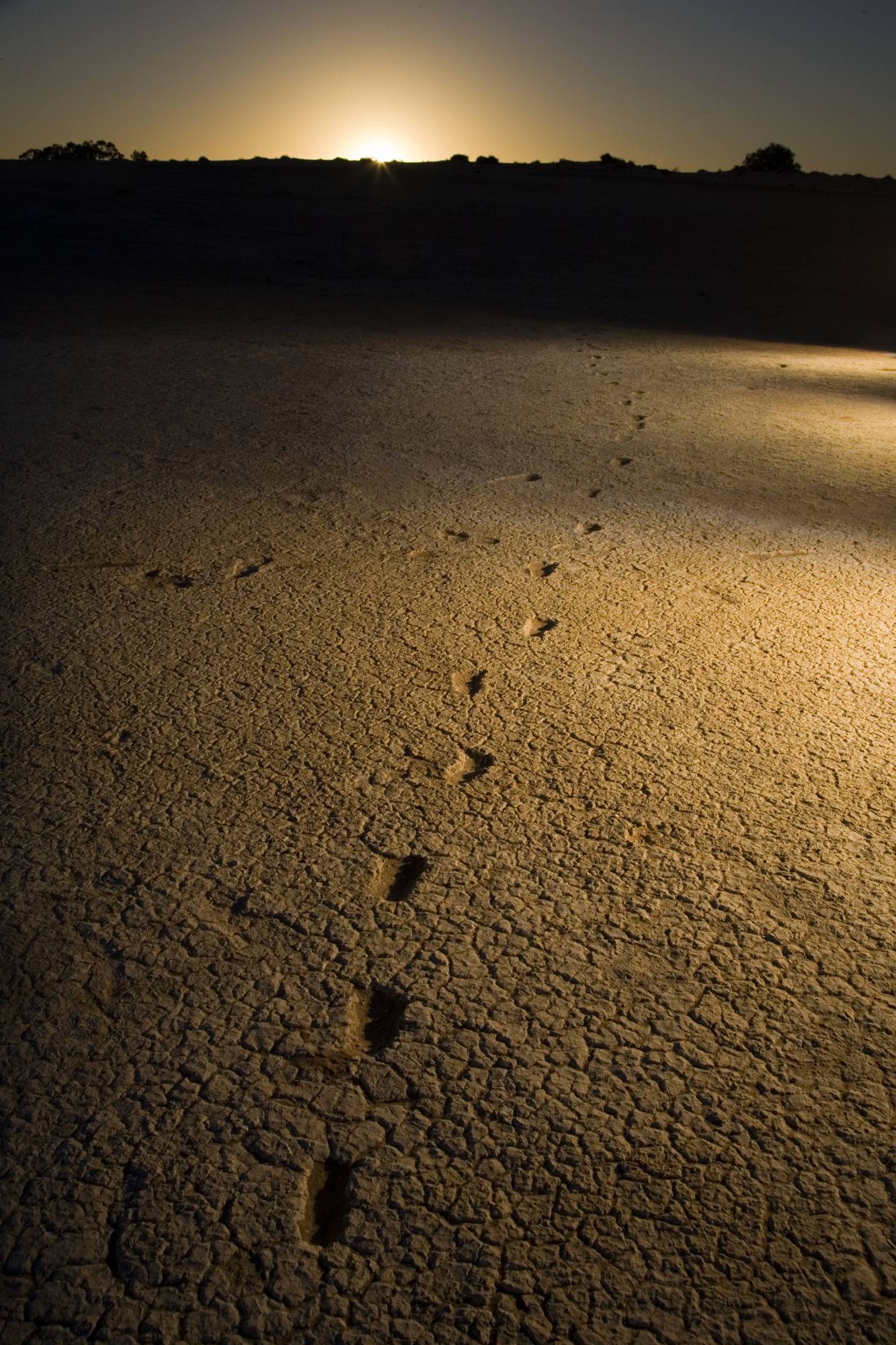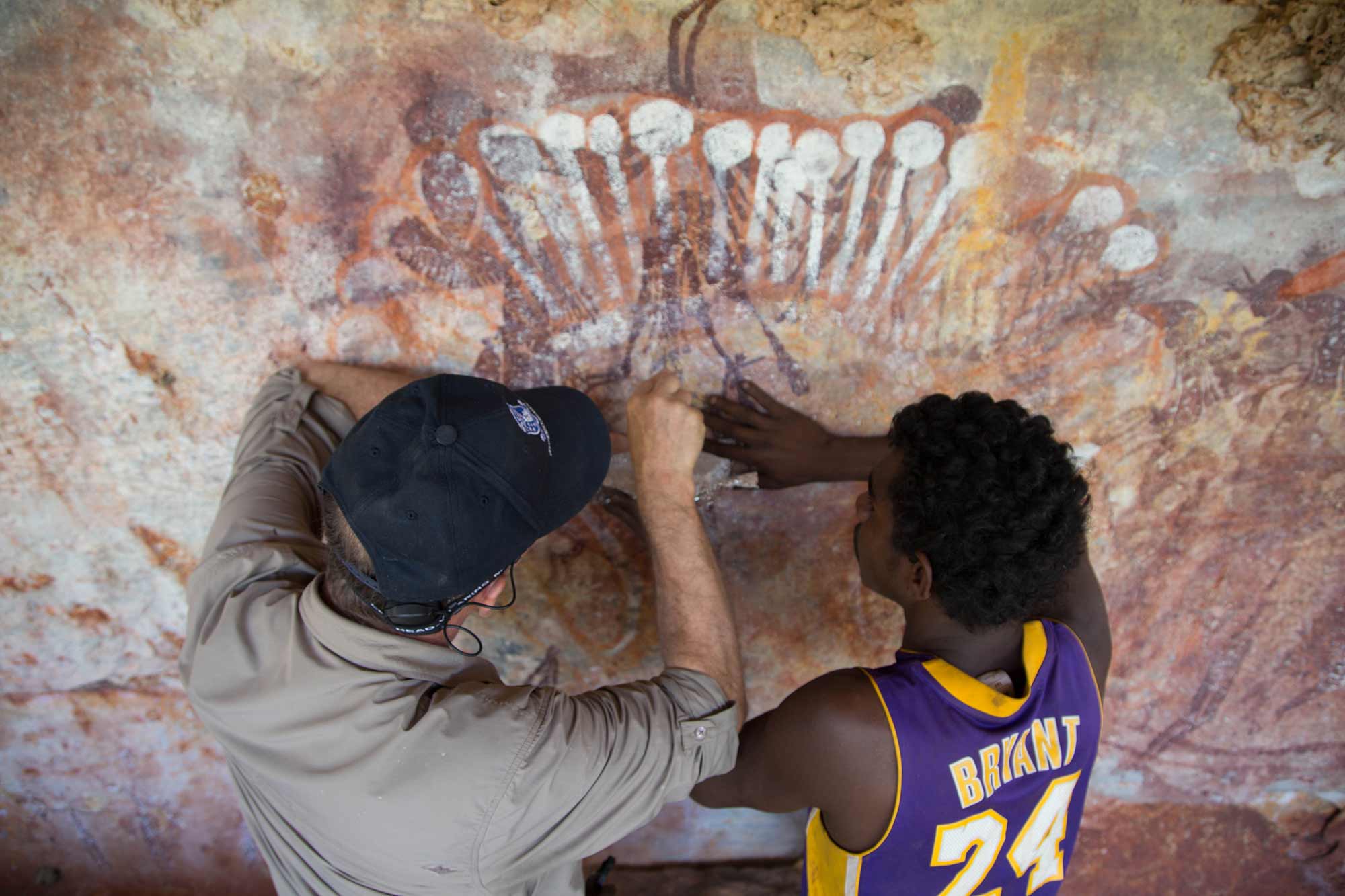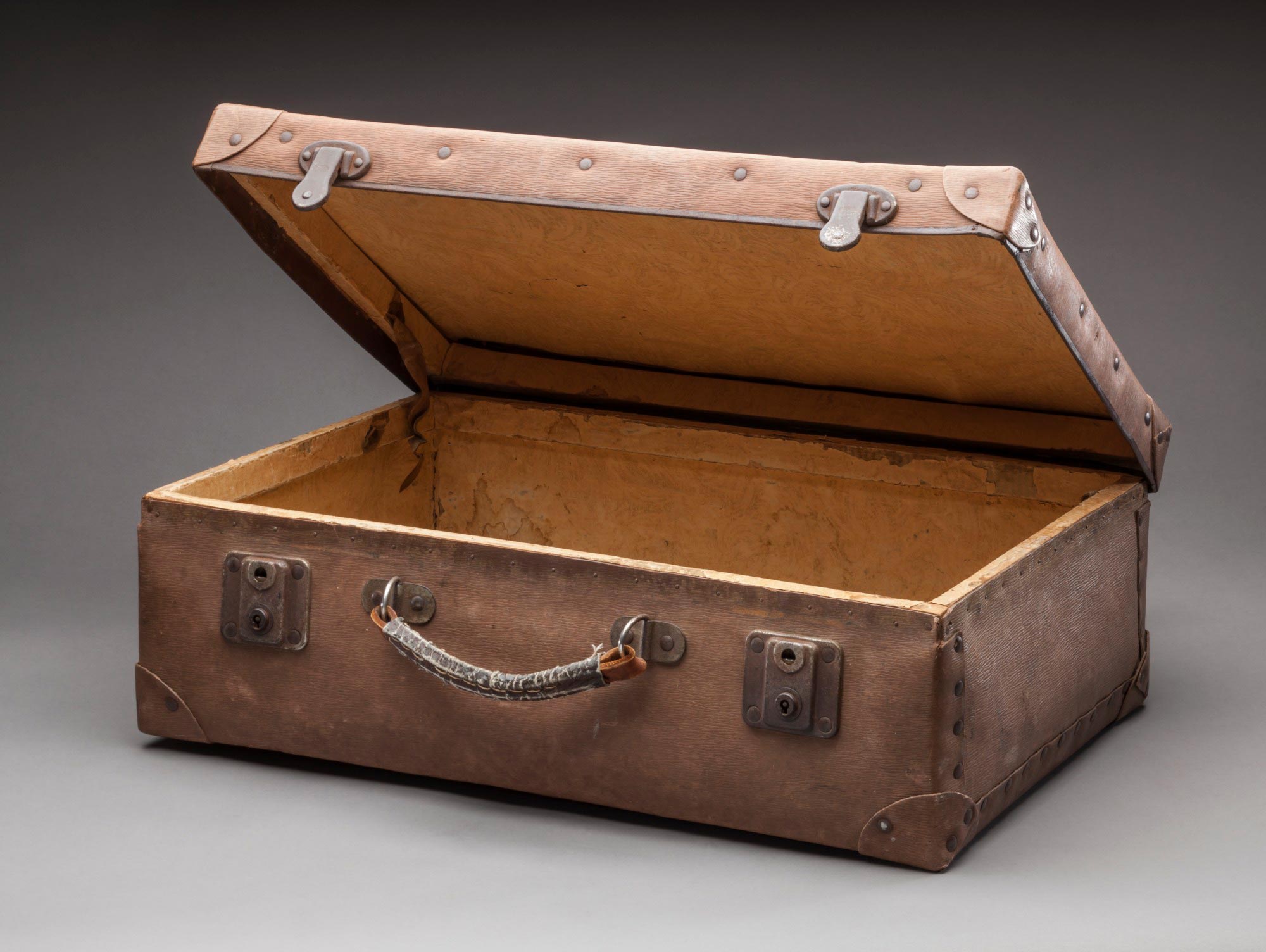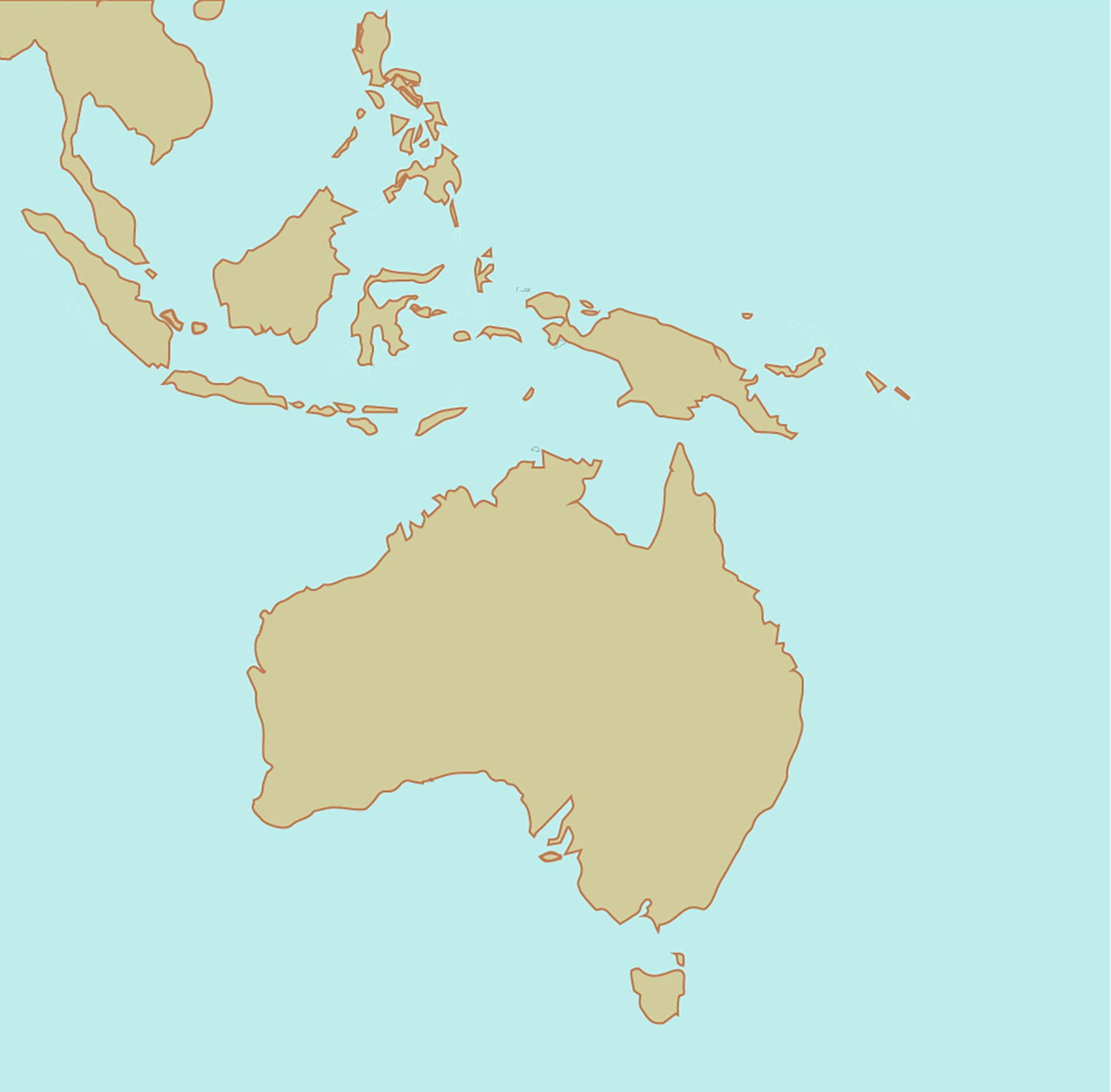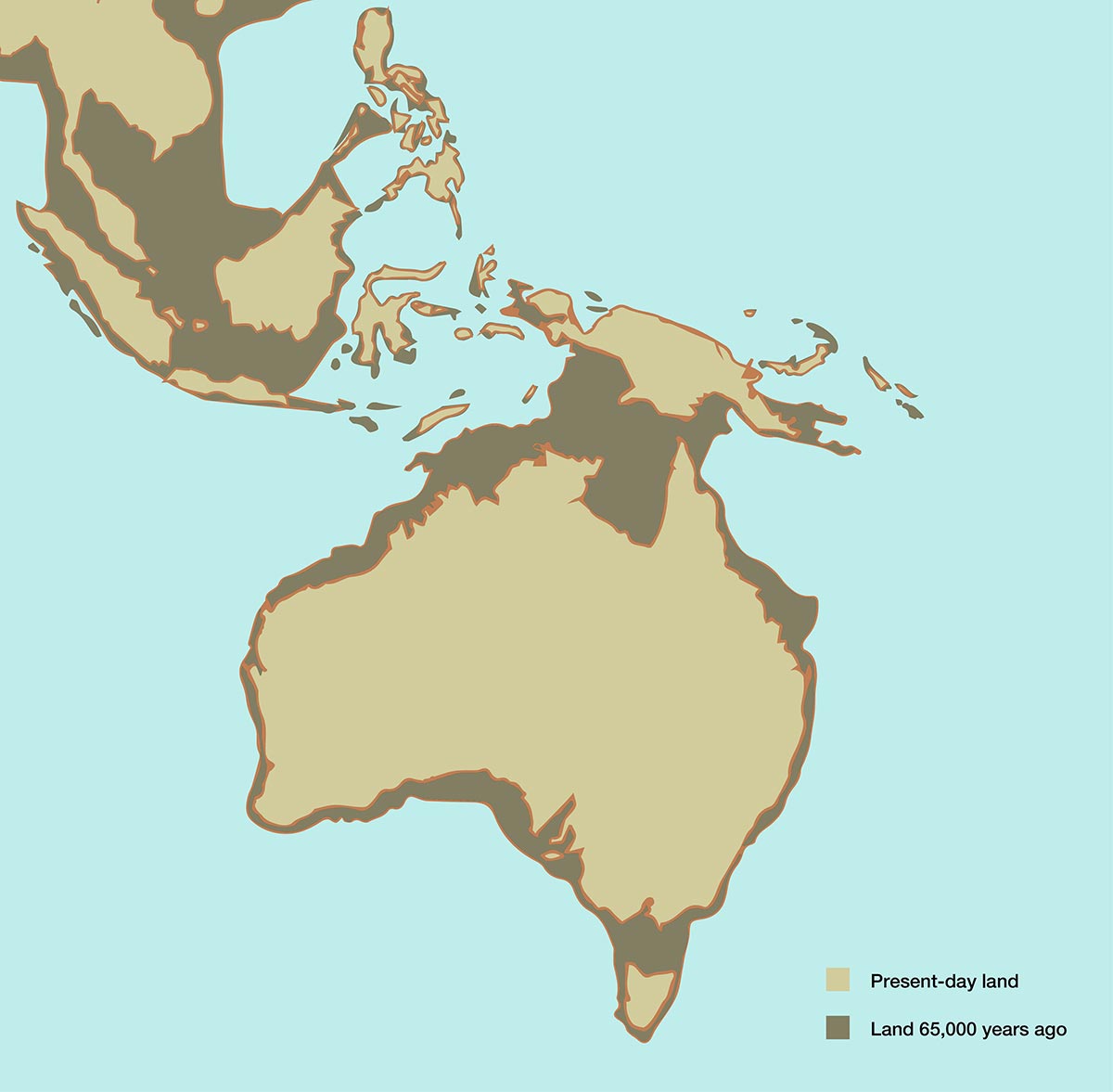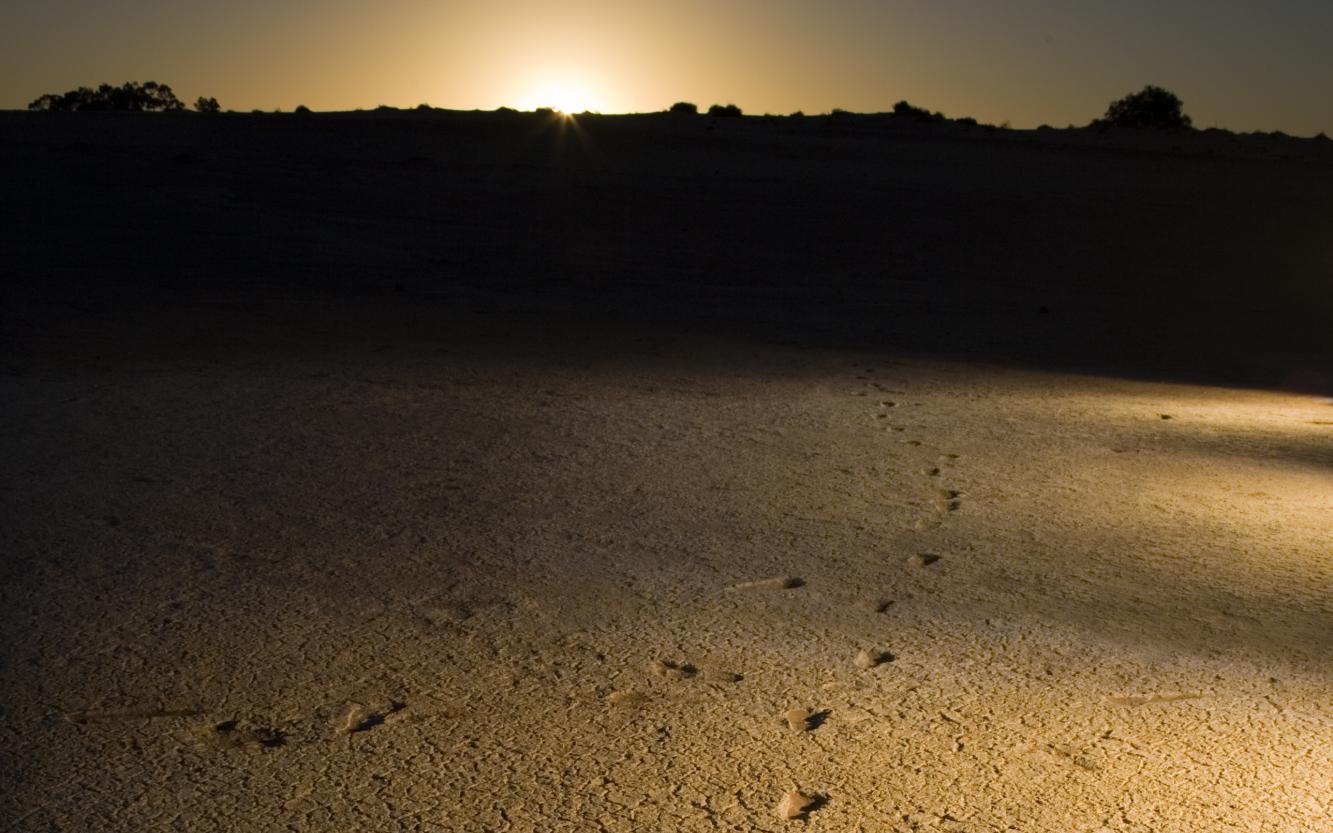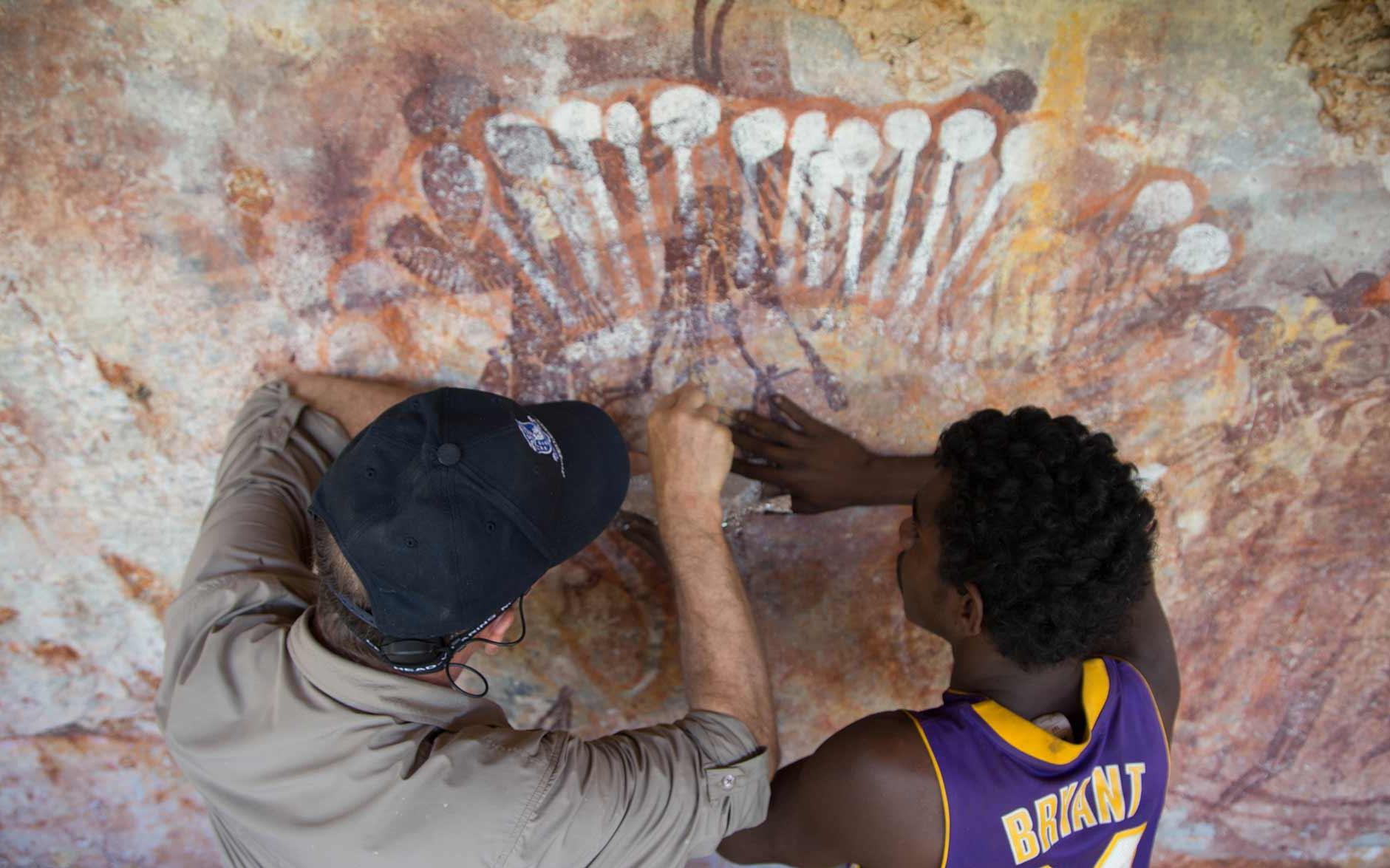Learning module:
Deep time history of Australia
Investigation 2: Two big ideas in deep time history in Australia
2.2 Big Idea 1: Scientists believe that the first Australians came from somewhere else
The arrival of the first Australians
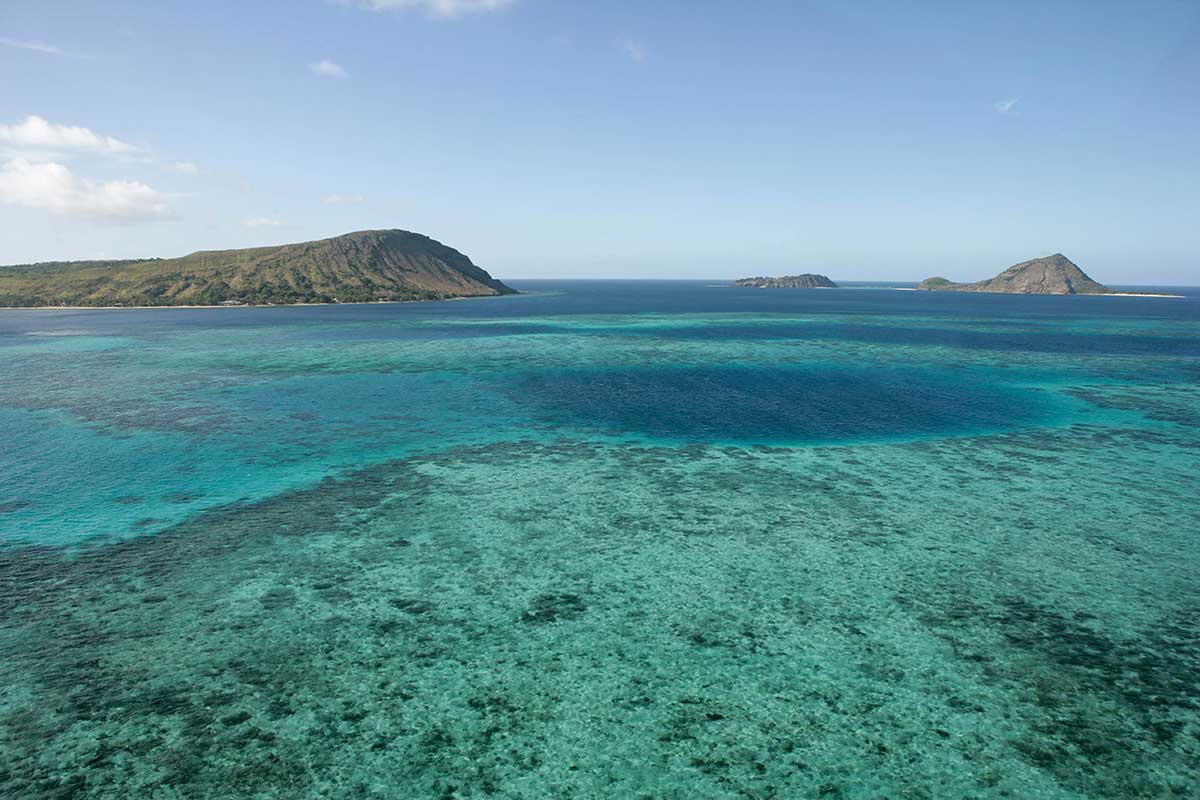
Where did the first Australians come from?
Aboriginal and Torres Strait Islander people believe that people have always been in Australia. They are part of the Dreaming, the time of creation of all the world.
Scientists and archaeologists believe that the first people arrived in Australia from somewhere else, between 50,000 years ago and 65,000 years ago. Estimates of when people first arrived in Australia is constantly changing as new evidence is discovered and as scientific techniques of measuring the past are improved.
Scientists do not know how or where modern humans developed, but there are currently two main scientific ideas that are under investigation.
The first scientific idea is that modern humans or homo sapiens developed quite suddenly in Africa and then spread, eventually displacing all earlier types of homo erectus (pre-modern humans) such as Neanderthals, which had been around for about 2 million years.
This might have looked a little like this:
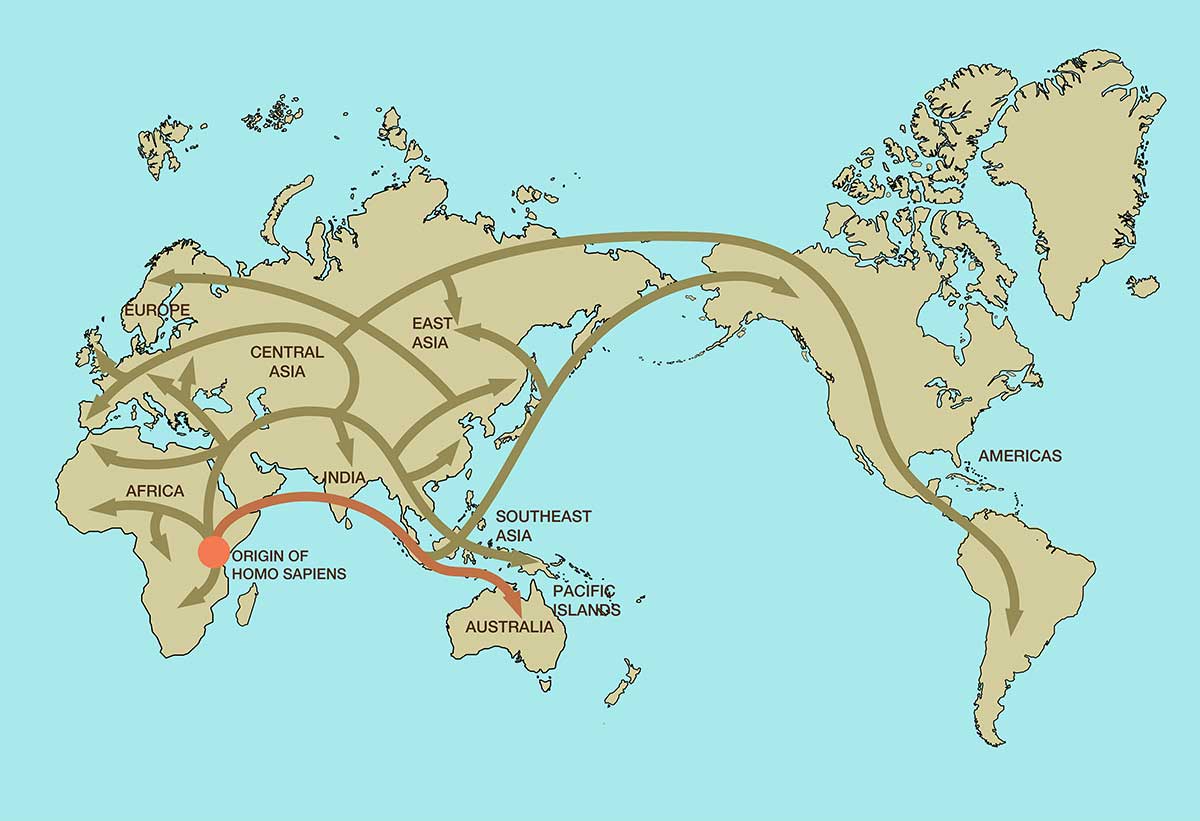
The second scientific idea is that modern humans appeared in many parts of the world at about the same time, mixing with earlier types of homo erectus.
Whichever way this happened, according to science, the earliest humans made their way through Asia and eventually moved southwards towards the Australian continent.
The first people arrive in Australia
Australia looked very different 65,000 years ago. The continent was larger than it is today. Some land that existed in ancient times is now under the sea. Australia was also joined to other land masses that are now separate islands.
1. Map A shows what Australia looks like now. Map B shows what it looked like about 65,000 years ago. There was much more land as the sea was much lower than it is today. Which two large islands, one in the north and one in the south, were joined to Australia then?
2. Map C shows how people might have migrated to Australia at this time. This map shows some different possible landing points. Why do you think scientists are not sure which landing points Aboriginal people used? [Hint: think about the evidence that would be needed to confirm this and the difficulty of finding this evidence many thousands of years later.]
How did people know there was land?
The first people probably came to Australia from around the area that is now Timor. To get to Australia, they must have made a canoe voyage of about 90 to 150 kilometres of open water, which would have been a remarkable maritime achievement. But how did they know that Australia was there?
Imagine that you are about to go on a trip to another place. You cannot see the land — but you know it exists. How might you know that land exists?
3. Write down how each of the hints below might have told people that there was land even though they could not see it. If you need more help, hover over the relevant clue at the bottom.
a) Birds would help you know that there was land because…
b) Clouds would help you know that there was land because…
c) Smoke would help you know that there was land because…
d) Floating vegetation would help you know that there was land because…
Clue AClue B
Clue C
Clue D
Another possibility is that people could see the land, and that was how they knew it was there. Then perhaps they could ‘island hop’ towards Australia.
A recent scientific study might explain what happened. We know that there is ancient land that is now under water off the Australian coast. These would have only been partly under water when people first came to Australia. They would have been islands then. Scientists have worked out how far away each of these hundreds of islands would have been from each other, and whether a person standing on the highest point of each island could have seen another island in the distance. If they could see another island, they could travel there and see the next island. In this way they could in theory have ‘island-hopped’ from Asia to Australia, paddling or sailing canoes from Timor to Australia, perhaps using the summer north-west winds that blow strongly from Timor towards Australia.
4. We will never find any physical evidence (such as spears, clubs, paintings or bones) from the first people who arrived on the Australian landmass. Why not?
Using DNA and archaeological evidence
Another theory is based on a study of the DNA of Aboriginal and Torres Strait Islander people in Australia.
DNA is deoxyribonucleic acid. It is the hereditary material in humans and other life forms. It makes us what we are. We inherit it from our parents. People of different regions have some differences in their DNA, so analysing a person’s DNA can help you trace back their family history over many thousands of years.
Modern DNA studies suggest that Australian Aboriginal people, Papua New Guinean highlanders and the Mamanawa people of the Philippines were all descended from the same group who left Africa, and settled in different places after a journey of several thousand years.
People who have the same ancestors have very similar DNA. By studying DNA samples taken from Aboriginal people living in Australia today, scientists have been able to see when and where people settled across ancient Australia.
Look at this map. The dots show different archaeological sites around Australia and the age of what was found there. The archaeological and DNA evidence show similar timeframes for the movement of people across ancient Australia.
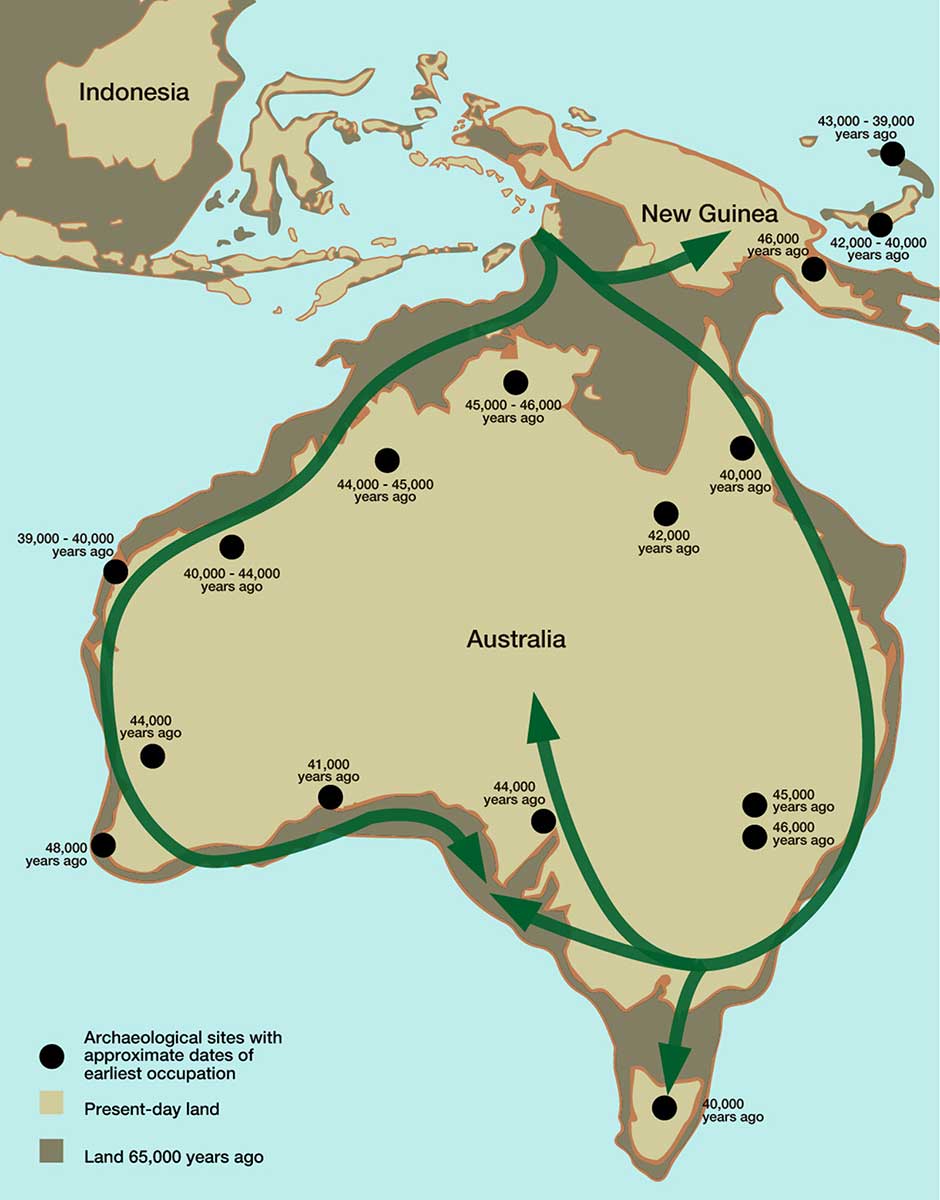
Use the map to answer these questions.
5. It is likely that people came to Australia from one of the landmasses to the west. Which modern country does the map suggest that was?
6. According to this evidence, people probably came down which side of Australia? How does the evidence show this?
7. When had people moved to all parts of Australia and Tasmania? (Hint: what is the most recent date you can find on the map?)
Why did people come to Australia? Was it an accidental voyage, such as a group of people out fishing being caught in a storm and washed off course? Or was it deliberate, a group of people setting off to settle in the new place — perhaps to escape conflict, or population pressures, or just out of a spirit of adventure?
We can probably never know. But whether it was accidental or deliberate, one voyage or many, imagine what the people would have felt as they waded ashore onto this new land.
8. List some emotions that you think they might have felt.
9. Report back to your class, explaining how this helps you understand ancient or Deep Time Australia through the Big Idea: Scientists believe that the first Australians came from somewhere else.
In your report make sure you explain:
- where Australians came from
- how they knew that there was land to go to
- where they landed first
- when this movement happened
- what the evidence is that tells us this, and what evidence is not available
- what this can tell us about ancient or Deep Time Australia.






